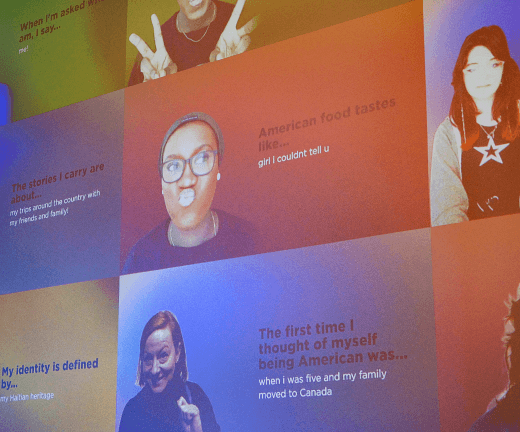Background
Imagine a world where every child has access to the internet, and with it, a wealth of knowledge, opportunities, and choices. This is the vision of UNICEF’s Giga initiative, which aims to connect every school to the internet and bridge the digital divide. However, turning this lofty goal into a reality is no small feat. With the complex web of multinational organizations, corporate interests, and internet service providers, UNICEF’s Project Connect faced a daunting challenge of mapping the connectivity of every school in the world in real-time.

IMAGINATION: How Do You Level the Playing Field of Connectivity?
The world is…well, a big place with a topography of disparities that does not make for a level playing field. Claire Holroyd, Product Lead at the time for UNICEF Project Connect, knew that in order to turn the dream of global connectivity for schools into a reality, she needed to create a living, breathing entity that connected with other data globally in an open source form. Even with the prototype her team had developed, it was going to take some creativity and imagination to turn it into a working platform.
The other hurdle? Working within the complex and multilateral world of the UN, UNICEF, corporate interests, ISPs—not to mention all of the actual IT systems needed to sustain this initiative over time—made this an extremely challenging project.

CREATION: Transforming a Critical Path Into a Visionary Pathway
Claire knew that the combination of a multitude of challenges plus delicate relationships of this project would require a unique type of help from the outside. She needed creative solutionists and boundary-less thinkers who also happened to be egoless and easy to work with. Our very own Phil Tapia, Co-Founder and Technical Director of the Chaos Theory Team, immediately came to mind. Claire and Phil had a longstanding professional relationship and she knew that the substance he was made of matched their needs.
Enter, Chaos Theory Team. As a team of visionary problem-solvers who specialize in creating systemic, scalable solutions, we integrated ourselves into the Project Connect team. Together we worked side-by-side with their team through a process that generated creativity, fueled ideation, and created a momentum that carried us all through. Here’s what it looked like:

Imagine
We began with collaborative ideation, which included research, the development of personas, and finally the creation of a design brief. Claire found the persona development to be a key factor in uncovering the best technology to use without bias, while embracing the diversity of the data required.

Design
Our teamwork with the Project Connect Team continued, synergistically dancing in “the zone”, as we created product requirements, solution architecture, and functional prototypes.

Develop
The longer we worked with Claire and her team, the more we felt like one team with a combined passion that felt strong enough to conquer any challenge. Together, we created a story map, which revealed the core features needed, and then embarked on an agile sprint cadence.

Deliver
Test. Learn. Adjust. Repeat. Before we could confidently deliver a working product, we had to immerse ourselves in the process of performance testing and documentation, making necessary adjustments as needed. This resulted in the delivery of a working product for the core data transfer.

Deploy
Building meaningful experiences for human beings means you have to take a human-centered approach. For us, this not only applies to the end-user, but also to the talented teams we work with, like the Project Connect Team. Our work didn’t end with delivery. We stayed available to them to provide guidance and counsel as the platform developed further around the core system.
Technology Used:

ETL orchestration

ETL scripting

Relational working database

Columnar format data lake

Deployed to AWS cloud
What’s it like working with the Chaos Theory team?
Finding the Visionary Pathway…
“In the beginning, we went through this process of doing personas for the people that would use what we were building in the short term, medium term, and long term. And it was such a great way for us to really dig into use cases. Then we could determine what was crucial vs. nice-to-have. It also helped us to clarify the technology more simply and without bias.” Claire summed up the experience with a single statement, “Their process gave us a critical path to a visionary pathway.”
…using a Human-Centered Approach
“I think their human-centered approach of starting with discovering what’s meaningful and creative and then moving into the technologies that actually support that discovery made everybody happy,” Claire remarked. “We felt like we had a thorough understanding of where we were and where we wanted to go with a clear path forward and the tech to build it.”
COLLABORATION: Connecting Humanity Together
2.1M
Schools’ geolocation mapped globally so far
332.3K
Schools’ connectivity mapped globally so far
46.21%
Of these schools don’t have connectivity
The Chaos Theory Team contributed to the results above as part of the greater whole of UNICEF Project Connect
Successful collaboration cannot exist without connecting with others. Similarly, successful connection—in this case, connecting schools worldwide to the internet—is dependent upon genuine collaboration.
Working with the UNICEF Project Connect team, we were able to tap into synergies, ignite inspiration in each other, and fuse our two teams into one for a greater cause. Together, we designed a platform to bring disparate types of data into one systemic, scalable solution.
The platform allowed the UNICEF Project Connect team to simplify an incredibly complex process, by creating a single “source of truth” database that ingested and normalized data and information from a very large number of providers and data formats. This database enabled them to gracefully manage the process of mapping schools internet connectivity.
Technically speaking: the initial configuration enabled the UNICEF data science team to migrate from individual ETL scripts for each data source to a formal data transformation (ETL) workflow.
The system to date has already mapped over two million school geolocations across 138 countries. That is over one third of the schools in the world. Almost 350,000 of the schools’ connectivity information has been mapped and over 46% of these are of schools that don’t currently have connectivity. This system is enabling UNICEF to raise funds and work with governments and ISPs to get these schools connected to the internet.
For Claire, the journey to the result was as important as the resulting platform itself. “The key to being a good consultant for me is the collaborativeness of that human-centered process all the way through from ‘here’s the big vision’ to ‘here’s the technical nitty gritty.’ Chaos Theory did that and delivered a system we can use, which is the best part.”
“My team was stronger after Chaos Theory left. My team was more empowered after working with them. They had more knowledge and they had the actual solution that they could use and grow over time.”

Claire Holroyd
Former Product Lead/Consultant, UNICEF Giga Project Connect
Relevant case studies
Interactive Design
Seattle Art Museum

The Seattle Art Museum (SAM) wanted to do more than simply reflect diversity in their American art exhibit – they wanted a way to engage the diverse breadth of visitors in the exhibit itself. Chaos Theory worked with SAM to create a unique and immersive interactive experience.
Transit
Community Transit

Community Transit, a public agency serving 5 million passengers annually in Snohomish County, Washington, realized that they needed to revamp their user experience to stay relevant in the digital age. Chaos Theory engineered a new suite of transit information tools to serve their users.
Augmented Reality
Microsoft HoloLens

We partnered with Stanford and Microsoft to create the first visualization of MRI data within the HoloLens. By giving surgeons the power to visualize data directly on the patient, as well as the size and location of the tumor, the Serra system shows the way toward increased accuracy and improved patient outcomes.

